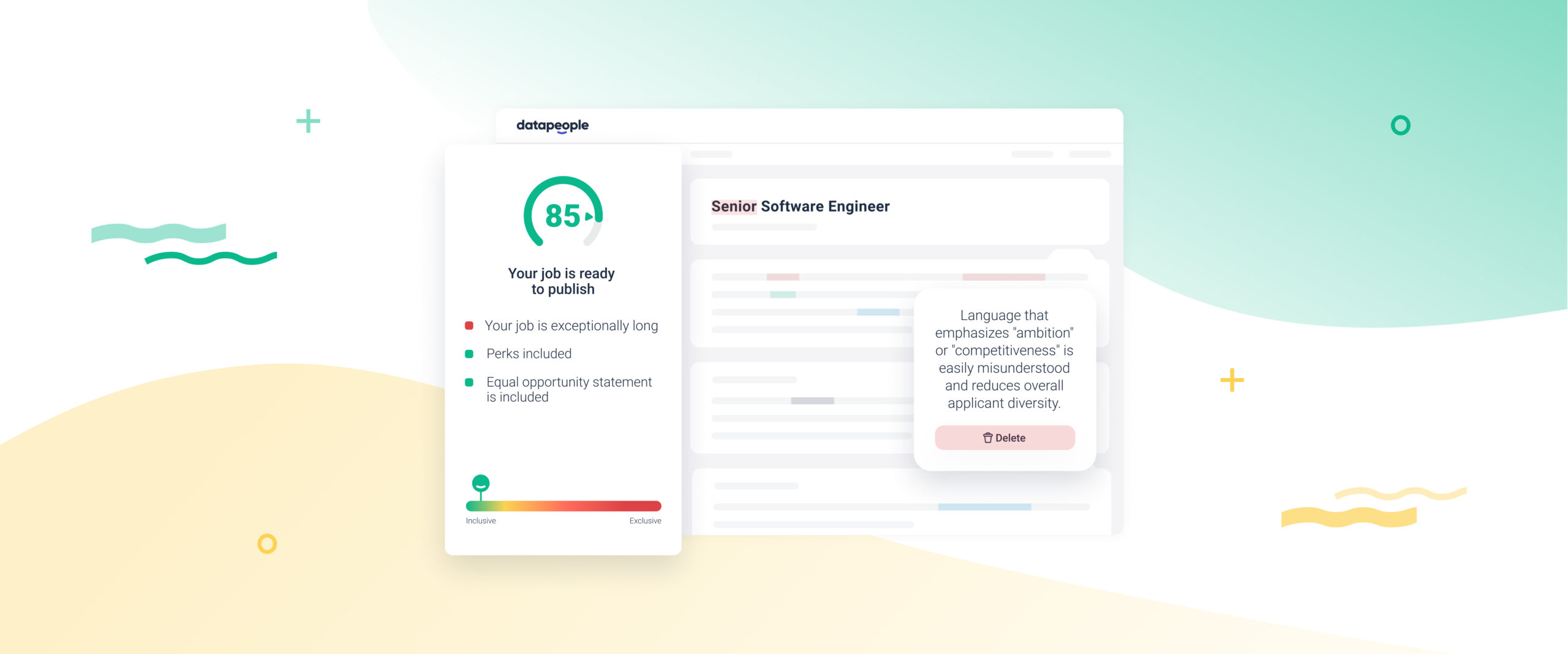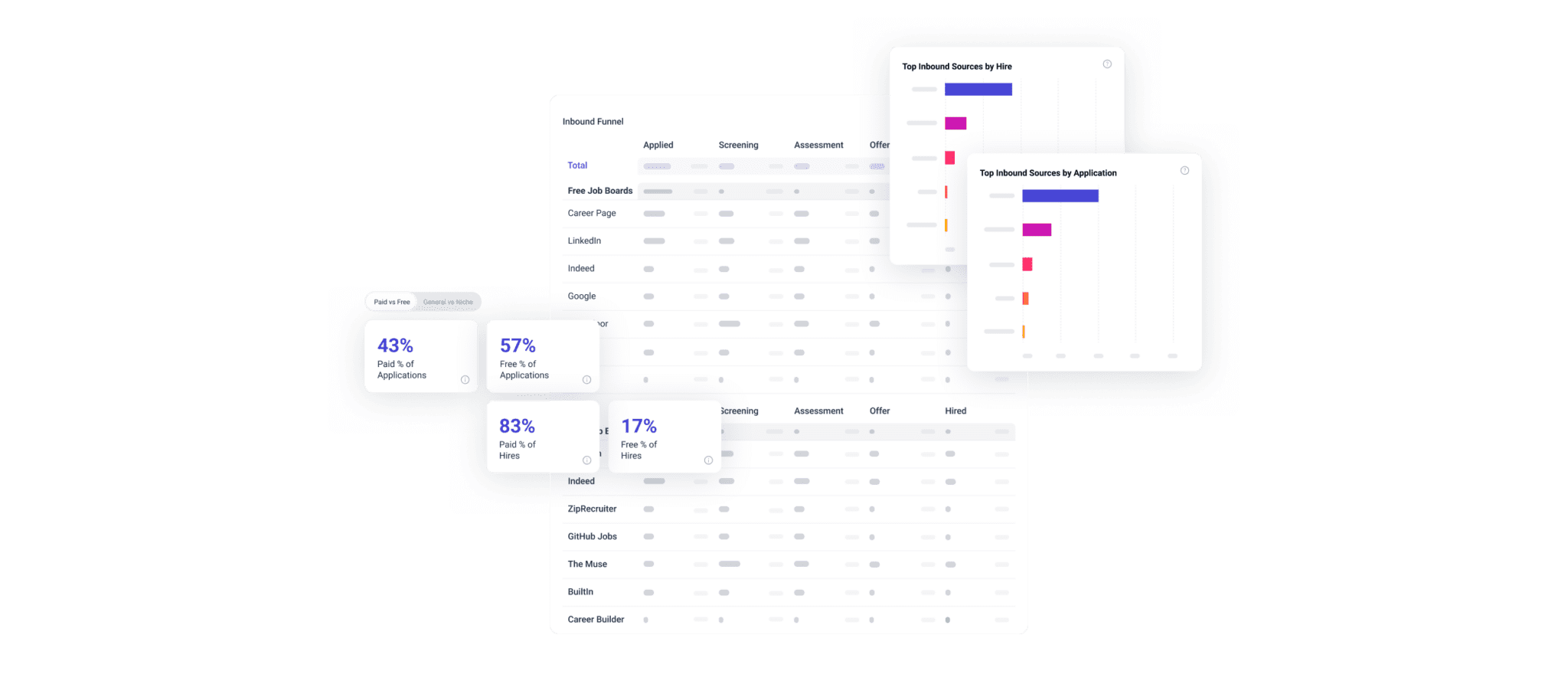Job description software is growing up. It’s about time, too, because a static database of pre-written jobs or guidance on gendered language alone is no longer enough. You can and should expect more.
Job description software should offer all of the functionality you need to write effective job descriptions. It should provide guidance on job titles, content, language, and requirements. It should include features like salary estimates, recruiting analytics, and workflows. So everyone on your hiring team can get the job description basics right for job ads that are easy to find, clear, and welcoming.
Job boards work by matching keywords in candidate search queries to keywords in job descriptions. Therefore, searchable job titles are critical. Job titles also signal to job seekers the seniority level of the position, which they can use to gauge whether they qualify.
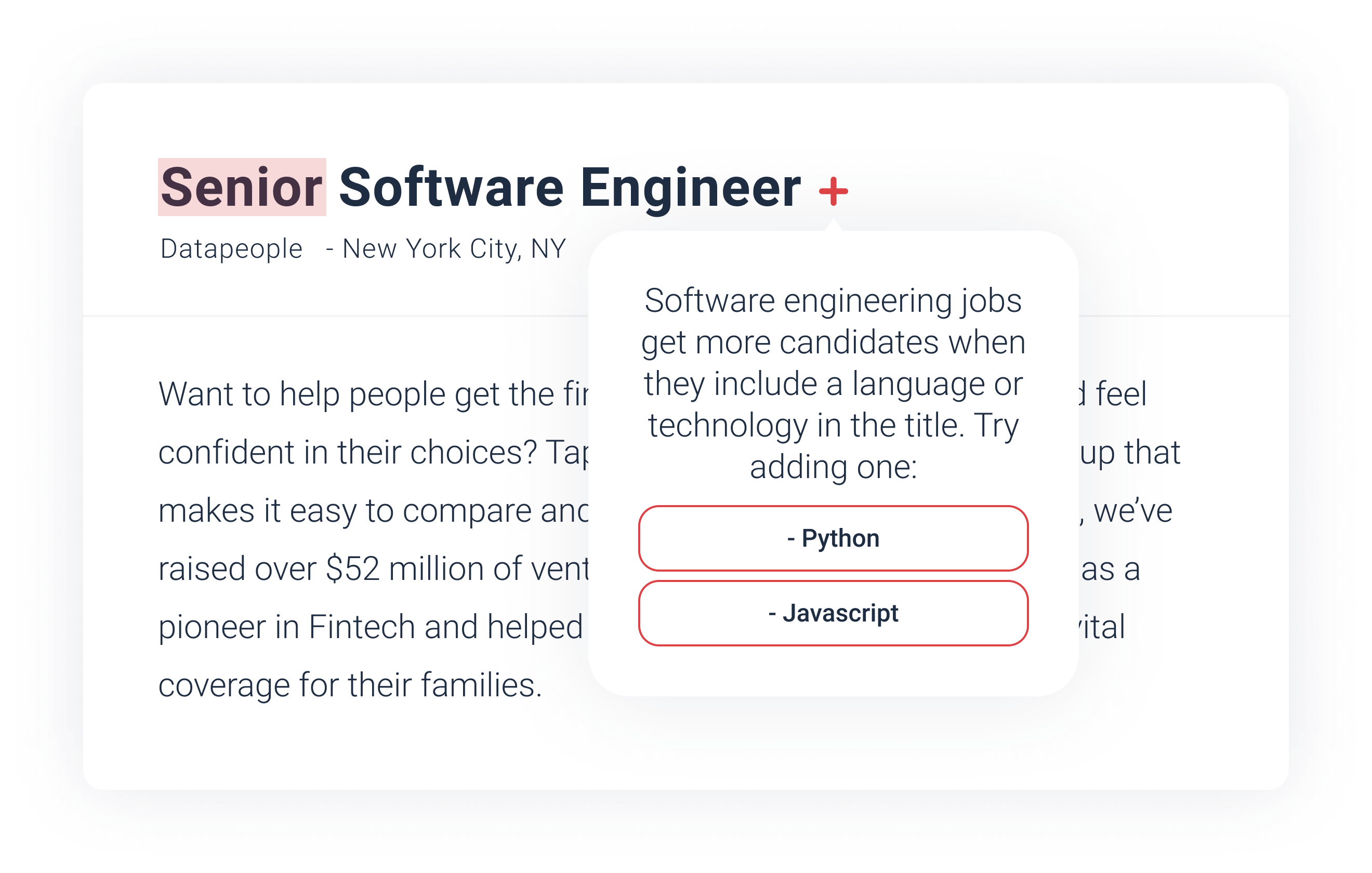
Job seekers use concise, industry-standard job titles, not internal jargon (e.g., Customer Service Manager, not TLC Manager). They also look for titles that describe the area of expertise (e.g., UI Software Engineer versus UI Engineer). And they search by location (Indeed, Google and LinkedIn need to show your job to candidates looking in your area).
Job seekers also use job titles to help gauge whether they should apply (e.g., financial analyst titles). If a job seems too senior because of the title, it may trigger a confidence gap for some job seekers (regardless of the requirements). Overqualifying a role can deter many potential candidates.
Content guidance
Job description software is about more than just language. Great job descriptions pull together a number of content pieces that, together, offer clarity and encourage qualified candidates to apply. They also help with your pay transparency and compliance efforts.
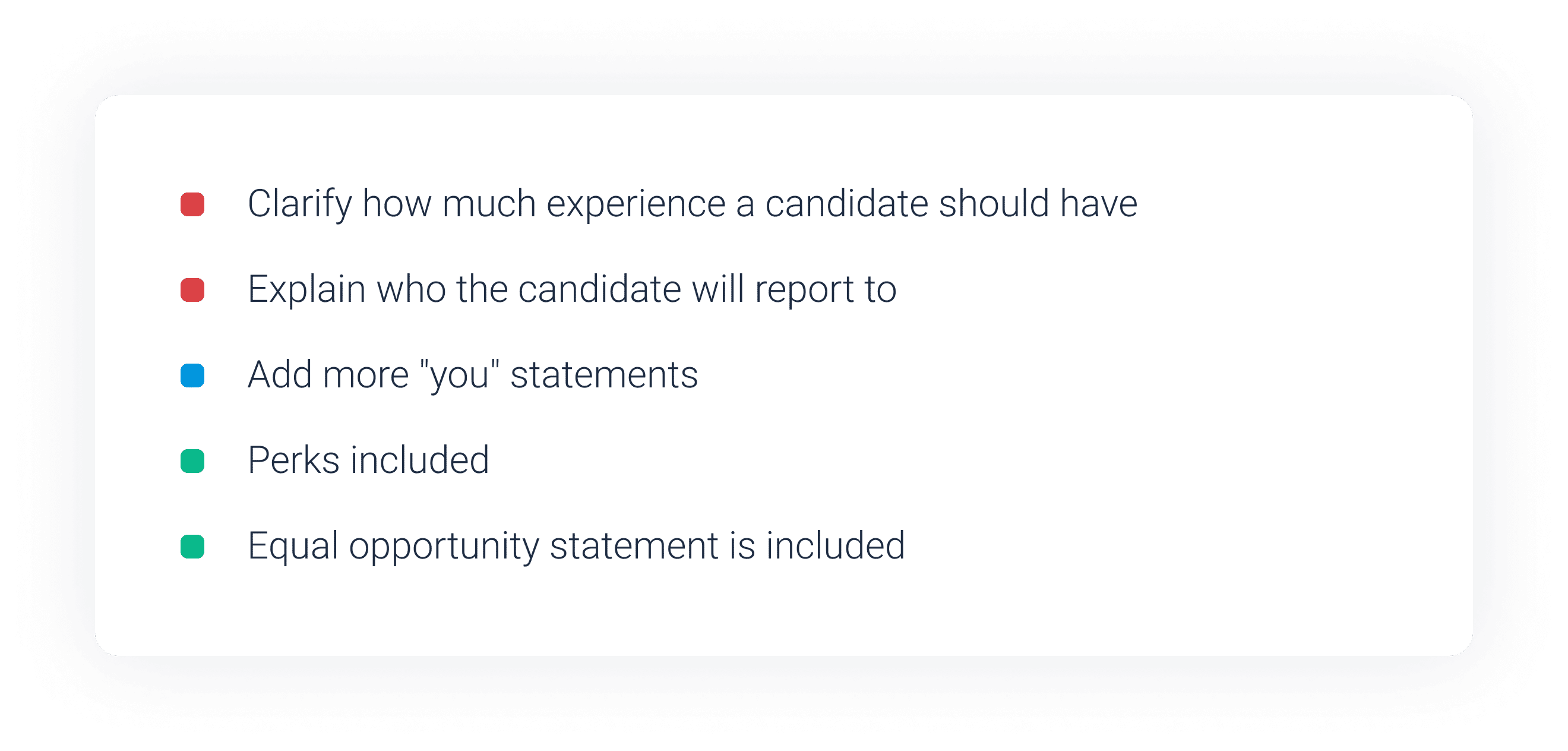
You can yammer on about how you take care of employees or you can just list your benefits. You can use cutesy language to describe your fun culture, or you can just list the perks that illustrate that.
Job description software’s guidance and structured content (i.e., job post templates) help you avoid job posts that are too long or missing key information. Something like diversity information may seem like a snoozer, but a compliant job description assures candidates that you value diversity and helps with compliance.
Language analytics
Language analytics helps you make the right impression on candidates regardless of their gender, race, or background.
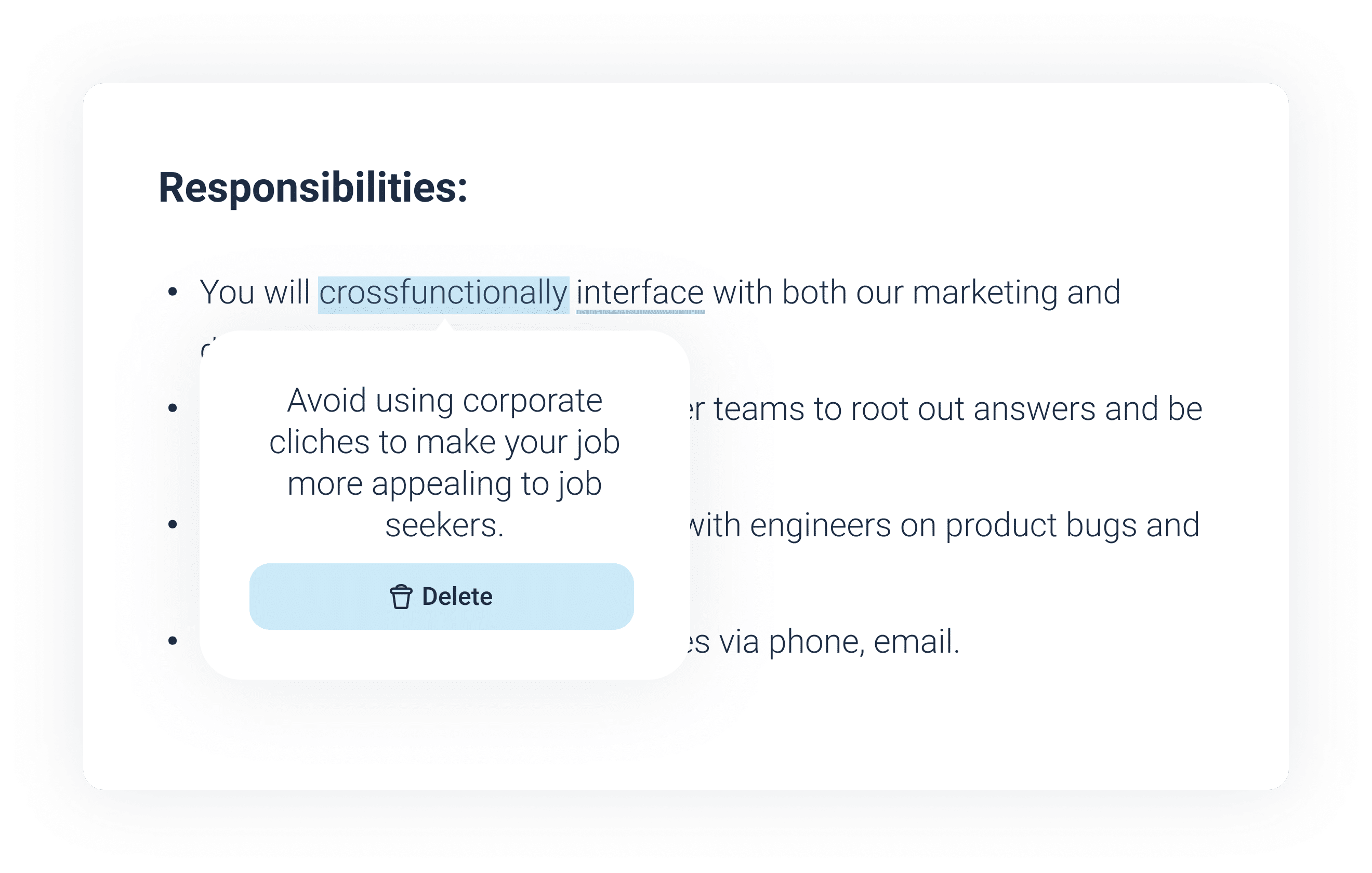
The language you use can send unintended messages that can deter candidates. Our own research has identified words, phrases, and general sentiments that deter some candidates from applying.
Job description software guides you through the job posting writing process. It steers you away from job description language proven to deter qualified candidates and towards language that attracts qualified candidates, including when you’re using AI for job ads. It also helps clarify your writing, showing you how to address candidates in the active voice and remove confusing phrasing, corporate jargon, and more.
Requirements analysis
A high number of applicants isn’t the same as a high number of qualified applicants. Job description software steers you away from job requirements or requirement combinations that may confuse or deter qualified candidates.
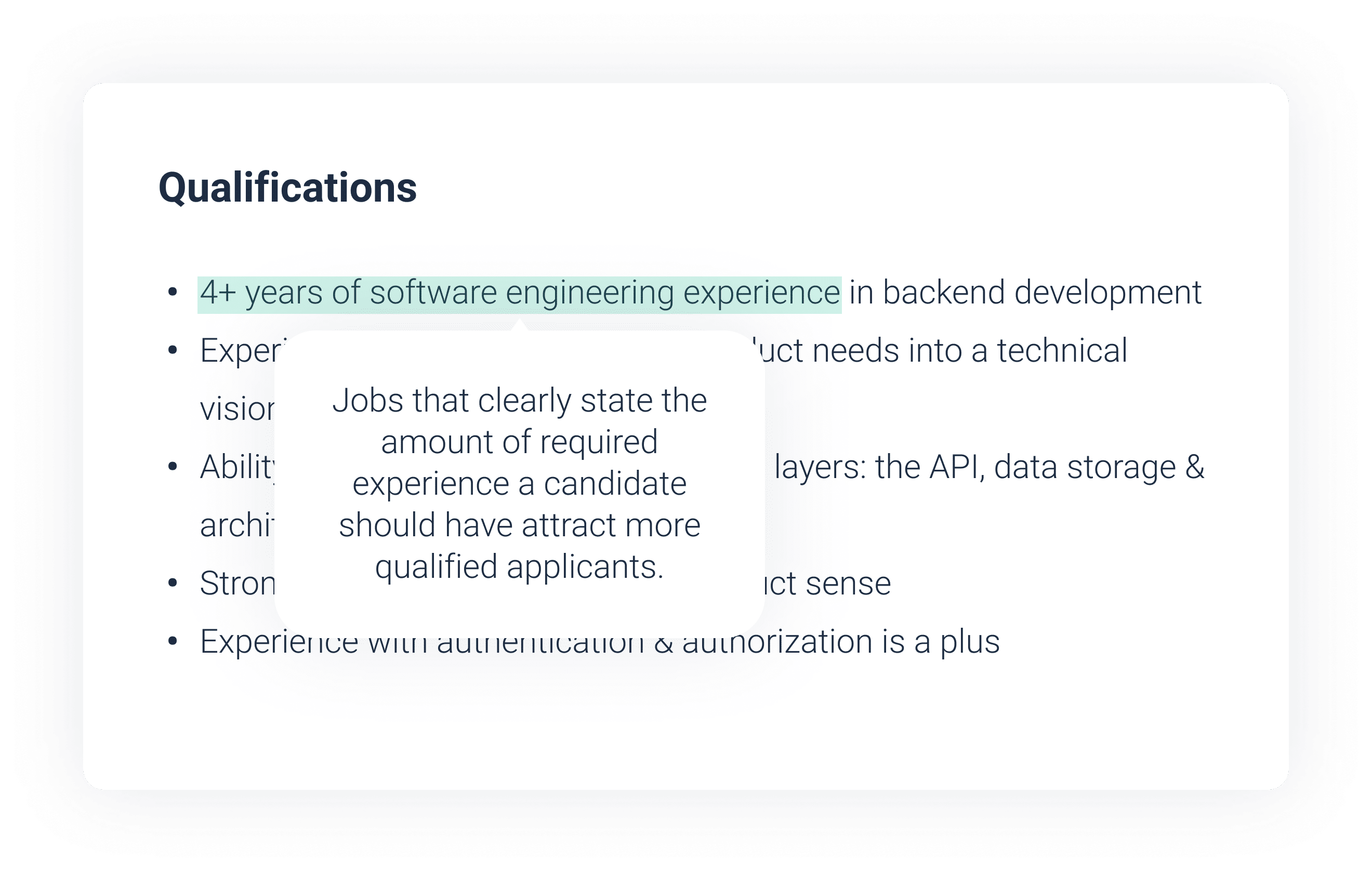
- If you list your entire technology stack on a job description, you’ll cast too wide of a net.
- Adding ‘Senior’ to a job title can often intimidate candidates and deter them from applying (known as job creep).
- Requirements that don’t make sense to job seekers in an area may reduce the number of local applicants.
- Requiring a college degree for a job that doesn’t need one narrows the top of your talent funnel.
- And low-impact requirements like soft skills can muddy the waters enough to confuse candidates. (Soft skills include the unnecessary yet ever-present ‘problem-solving skills’ and ‘excellent communication skills’ and the like. Best to remove soft skills.)
Job description software helps you clarify all requirements, from education requirements to technologies, so candidates can accurately assess whether their skill set is a match. So you not only get more applicants, you get more qualified applicants.
Recruiting analytics
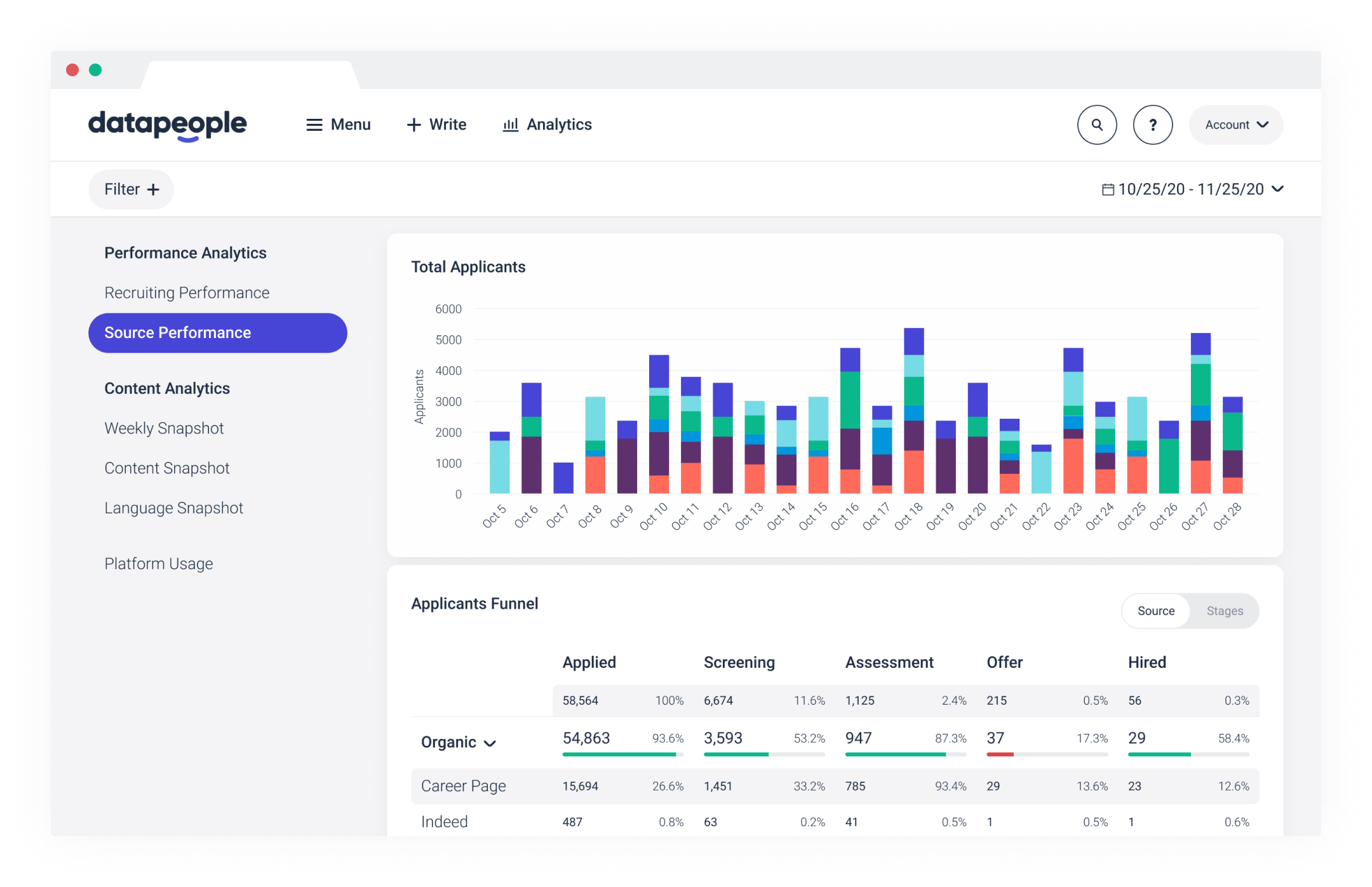
Understanding how your job descriptions perform can help you improve the health of your entire hiring funnel.
If you can filter your live jobs by location, you can see which offices are struggling to fill positions. Filtering by seniority can show you how well you’re recruiting junior jobs versus senior jobs.
Recruiting analytics gives you a bird’s-eye view of your hiring funnel so you can identify jobs that need attention, bottlenecks, and more. It provides actionable data you can use to improve your hiring efforts overall.
Job description software workflow

Writing job descriptions with inclusive content is far easier with software platforms like applicant tracking system (ATS) integration, custom templates and file management (i.e., Dropbox for your job descriptions).
Integration with an ATS like Workday or Greenhouse enables hiring teams to work collaboratively on job descriptions, easily post them back onto the ATS and then track their performance (without help from IT). With custom job description templates, your team has access to critical content (e.g., perks and diversity) that is easy to include (just drop them into any template) and always on-brand.
Job description software enables you to manage content and speak with one voice across your organization. It keeps jobs organized and ready to edit so your hiring teams always know where to start.
What job description software should do
Job description software should help you title your jobs correctly, incorporate critical content and use inclusive language. It should help you list requirements clearly, measure talent pipeline performance, and work collaboratively.
Are job descriptions marketing documents? Yes. And job description software should help you when writing them. So they’re easy to find, clear, and welcoming to a large and diverse candidate pool. For better recruiting on every job.


